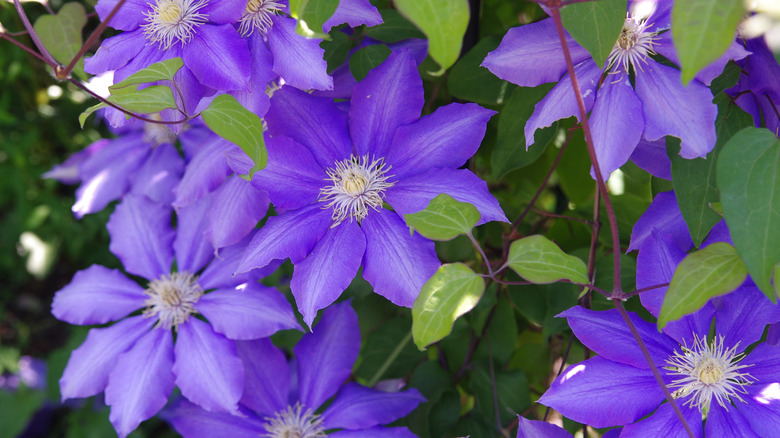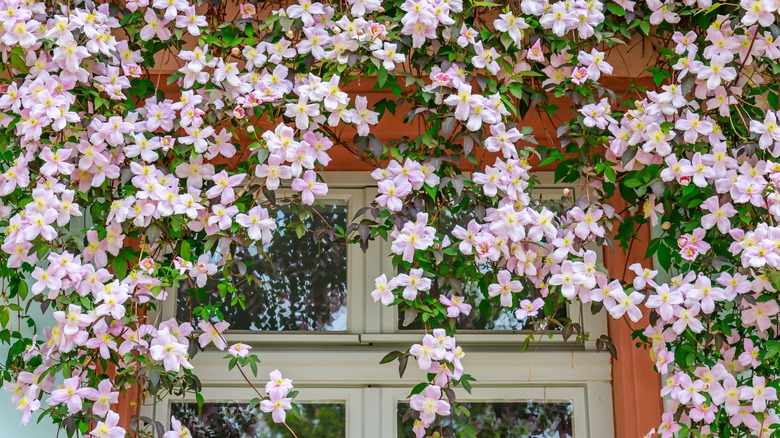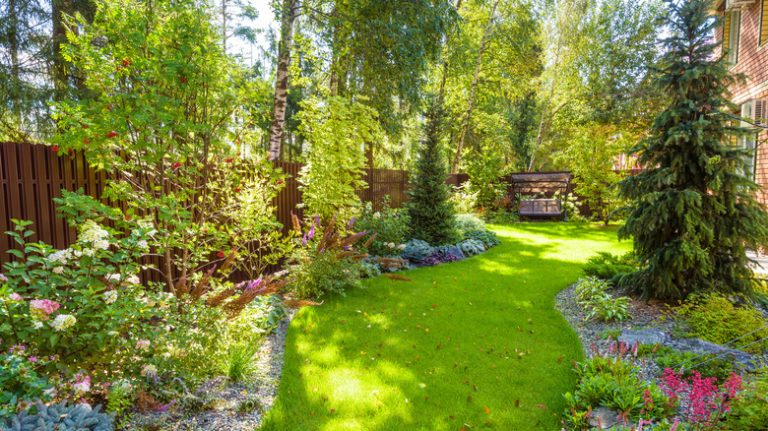Garden Trees, Shrubs & Vines
Peg Aloi
Clematis vines are reliable blooming perennials that add vertical interest and seasonal color to the garden. There are a few tricks to planting them successfully for years of beauty, and one of the most important considerations is to choose the proper location. Clematis flowers generally need plenty of sun to bloom, but the roots need a bit of shade to help the plants thrive. Also, clematis are long-lived plants and don’t like to be moved, so picking a good planting site is crucial.
It may sound tricky to find a spot that has enough sun for your clematis to flower while also providing some shade for the roots, but there’s also a fairly easy solution: planting a small sun perennial near (though not directly at) the base of the plant to provide adequate low growing shade. The choice is yours, but a clumping perennial that comes up in late spring may be best — such as a day lily, coreopsis, sedum, columbine, or phlox. This kind of plant will provide the most consistent amount of foliage or coverage while also being easy to divide as needed.
There are also some clematis that will flower in semi-shade if you don’t have a sunny spot, and planting in a shady area also helps keep the roots cool and protected. The best varieties for shade include the Group 2 clematis Nelly Moser and several Group 3 clematis such as Prince Charles, Polish Spirit, and My Angel.
Other considerations for planting your clematis

zzz555zzz/Shutterstock
In addition to carefully choosing a sight with ample sun, you will also want to ensure that your clematis has good soil for its somewhat sensitive roots. The best soil is one that is well-drained, rich and loamy. If your chosen site has less than ideal soil, add soil amendments,including compost, manure, and topsoil. Add these amendments when you first plant your clematis and top-dress the area over the roots every fall with some compost to help keep the soil nourished.
Your clematis will also benefit from a light layer of mulch, which will also help keep the root zone cooler. You can use wood chips, shredded leaves, pine bark, or pine straw. A natural mulch is best, as opposed to a dyed wood mulch. Be sure to keep the mulch a couple of inches from the base of the plant to give it a bit of air circulation.
The clematis needs a decent amount of water to bloom, especially during the summer heat, so be sure that anything you plant near it allows some water to reach the root system. You can plant a clumping perennial on either side of the vine instead of directly on top of it to provide enough shade and allow rainfall to permeate the ground nearby.
Find a good spot for climbing

nnattalli/Shutterstock
One of the most unique features of the clematis vine is the way its tendrils climb and cling, giving your garden vertical interest and plenty of colorful blooms that can be trained to weave around structures and plants. Make sure you choose a spot that lets your clematis vine climb and show off its flowers.
Different clematis grow to different lengths, so check the growing specifications before purchasing to ensure you have room for it. Some can grow as tall as 20 feet or taller, while others only spread three or four feet. You will also want to look at the specific guidelines for pruning your clematis vine according to the three different types. These types also have different growth habits; the clematis montana, for example, tends to spread quite vigorously and does well on a chainlink fence.
You can use various options to train or support your clematis vine. A small trellis or arbor works great. You can also plant it alongside a fence. Your clematis can also climb around a small tree or shrub. Planting it next to another flowering shrub, such as a rosebush, can provide charming color combinations when both are blooming at the same time. A pink rosebush with a purple flowering clematis vine, such as Jackmanii or Etoile Violette, twining through it is a stunning sight in the summer.

